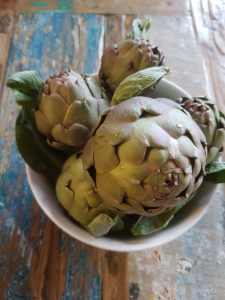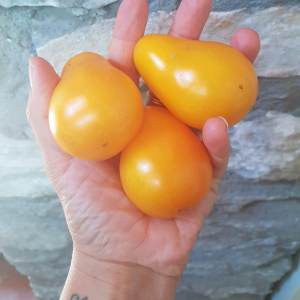No dig, no till, no pesticides – our jungle veggie garden
- Samaras Caldewey
- 23. Okt. 2018
- 4 Min. Lesezeit
Why no dig, no till, no pesticides
As I mentioned in a previous post (From dirt to table) when documenting our first attempt to set up a veggie garden: we are really bad at weeding and we like everything to be as organic as possible (hello, that’s the whole point of doing this extra work, to provide the family with the best food possible).
But what we ARE good at: doing research. Well, watching youtube is not that difficult 🙂 But seriously: we also read a lot, attended workshops even back in Singapore, went to botanical gardens and tried to incorporate many of the ideas and concepts right at the beginning of setting up the garden. This is very much in line with the permaculture way of doing things, but we also mixed this with Charles Dowding’s ‘No Dig” (https://www.charlesdowding.co.uk/) method, the Back To Eden Gardening and with our local circumstances: hard clay soil, yearly draught, fences that couldn’t be moved around so easily, very limited time, no wood chips available at all and and and.
Our reward
What we ended up with worked pretty well and to our tasting! Harvests of zucchini, tomatoes, peppers, eggplants, onions, garlic, beans, potatoes, salads, chard, herbs, chills and pumpkin were very impressive even though my main target for this year was ‘Create healthy plants to harvest seeds for the next season’.
Both the no dig veggie garden as well as the (more orderly looking but much more care demanding and for us less productive) dig test bed keep growing lovely veggies for us as we speak.
Lessons learned and notes to self
I’m going to let the jungle pictures below speak for themselves, but a few points first (I hope you love bulletpoints as much as I do):
Dig vs no dig
The no dig approach that we went for (cardboard and as much well rotten compost on top as we could get) saved us tons of time even after taking into account the initial extra workload. We were running a ‘traditional style’ test garden next to it and that one was not only lacking in terms of the harvests but also required much more attention. Digging first, then so much weeding every week!
We will definitely stick to the no dig method for now (not only does it seem to work, but it just makes so much more sense – more on that in a later post).
Chickens
Before sowing and then again after the main harvest we let the chickens in. Again, it helped with the weeding. But also I believe (comparing to the test bed and neighbourhood) that we suffered less from bugs (and probably even less so next year because the chickens broke their cycle by eating the larvae as well). Plus: extra eggs and healthy ones too 🙂
Spacing
I learned the hard way that I planted way to dense! It was my intention to don’t leave ground uncovered, but the result was way to crowded. Over time I wanted to check on the plants or harvest, I first had to prune and untangle.
Poles
No more poles. never. Whatever I tried, my tomato and been poles got wobbly at some point and tying the tomatoes up to the pole is again just so much more time intensive than just growing them up along a string (how it’s being done in greenhouses). So my poor dad and hubby will have to set up a structure (think massive pergola) above the main veggie garden.

Bamboo trellis for the runner beans
Seeds
Seeding, pampering the seedlings, transplanting, and everything take so much time anyway, that I highly recommend choosing good seeds. Good, what does that mean? To us it means not only that we want the seeds to be organic, but also that we by heirlooms so that overtime we a) don’t have to buy seeds again and b) have seeds that are perfectly adapted to our conditions. Unfortunately, my Greek is still very basic so other than acquiring seeds at the Peliti seed festival I relied on Arche Noah and got them sent to Greece.
Seeding
Next season the greenhouse will be less busy and I will seed more varieties directly. Because yes, raising the seedlings in the Greenhouse allows for more control (seeds are not getting eaten by birds or scratched away etc.) and gives one a headstart, but with such a long growing period that we are having (pretty much all year): why hurry with the tomatoes and such? Also, the volunteer ones that grew on their only turned out to be the more robust plants and didn’t require any attention from me.

Some of our seedlings in the greenhouse
Don’t let your toddler sneak into the garden until plants are mature.
Varieties
When choosing varieties to grow: it is not only about what you love to eat but also about how forgiving a plant is reading its harvest and storing period. Tomatoes, for example, we love love love. But when they are ripe, they are ripe and you need to harvest (and eat or cook or can) pretty much immediately. Beets, however, don’t really mind whether you harvest this week or next week or even the week thereafter and once harvested they can be kept in the fridge for quite a while before begging to be eaten. Same with Physalis – they even get better after a week on the ground or on the shelf!
The jungle pictures

Our little veggie jungle in the morning sun

Veggie garden in the afternoon

The tomatoes were planted way too dense

The pumpkin taking over
So that’s it, our main takeaways for this season (we are already in the next season, having sown and transplanted the plants for autumn/winter) and turning them into lessons learned the next version of our garden should look again better and be easier to manage. But comparing this to where we started and where we were a year ago, it’s all good anyway 🙂
Stay tuned for more in-depth posts on methods, problems and solutions that focus on one topic at a time and will be easier to understand with the background and summary provided here.




































Kommentare